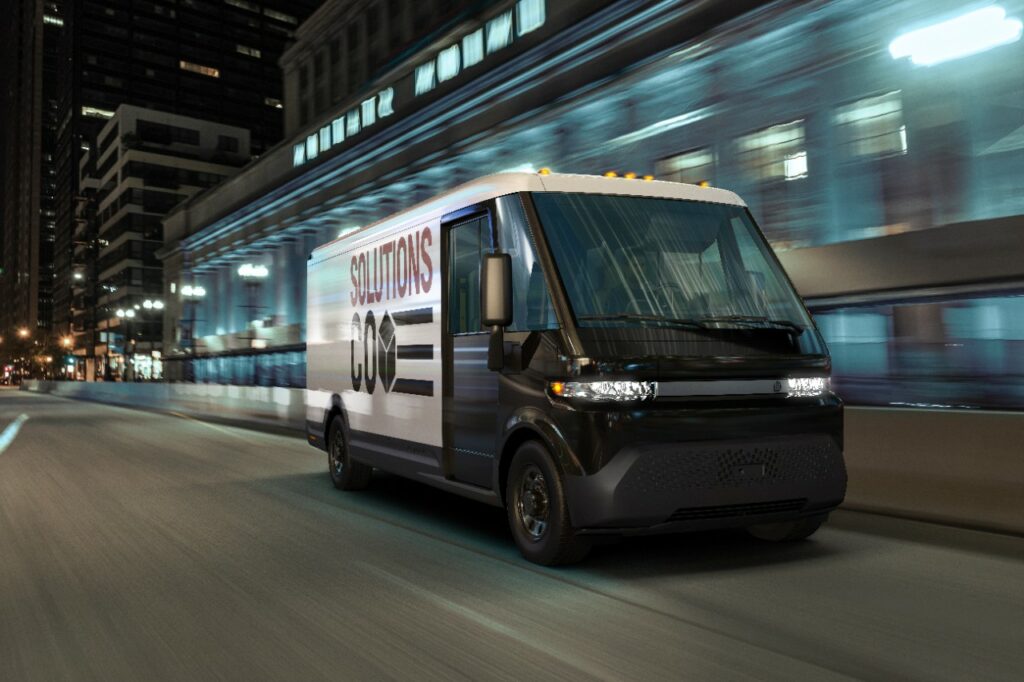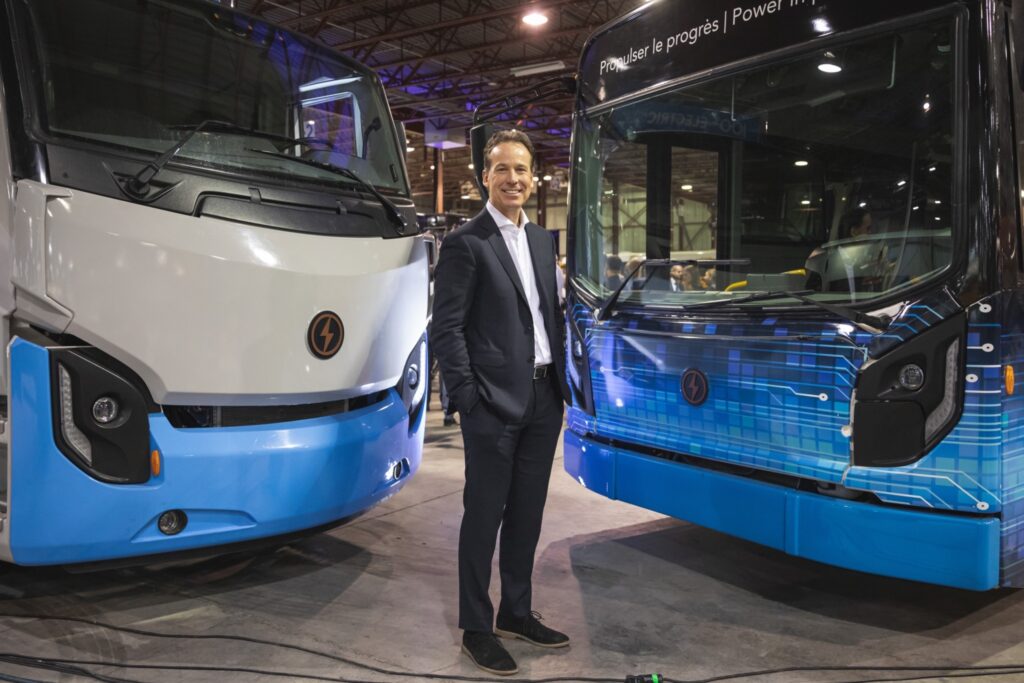Canadian businesses play leading role in race for electric trucks
Discussions about electric trucks traditionally focus on California or China for good reason. They represent two of the world’s fastest-growing markets for such vehicles. But look closely and you’ll see that some of the emerging equipment has an undeniable Canadian pedigree.
Dana TM4 — once a division of Hydro Quebec — develops underlying components such as electric motors. B.C.-based Ballard remains a world leader in hydrogen fuel cells. Further east, General Motors is gearing up to produce Bright Drop electric delivery vans at its CAMI assembly plant in southwestern Ontario. Quebec’s Lion Electric is ramping up plans to produce its own electric trucks, and will manufacture batteries at a new plant in Mirabel.
As global as the business of manufacturing may be, each draws on domestically developed expertise to make it happen.
Sylvain Castonguay, who leads electric vehicle integration for Dana, credits Quebec’s experience with hydroelectric power for supporting the evolution of such work in that province. “The grid on our side is close to 98% hydro,” he explains. “Going electric is ‘going renewable’ on our side.”
A commitment to support that very grid helped develop a generation of electrically focused engineers. The University of Laval was emerging as a leader in developing motor drives as early as the 1990s, eventually giving birth to the wheel motors produced by TM4, he says. And Hydro Quebec, which once counted TM4 as an in-house division, maintains a 45% interest in the business that is now part of the Dana family.
The company’s work on electric vehicles is not limited to Quebec, either. Dana TM4 also has a technical center in Oakville, Ontario, which designs products such as battery pack seals for a global power technologies group. Another Ontario site in nearby Cambridge is involved in projects like cooling for power electronics.

Heavier duties
But the Canadian businesses that have set their eyes on electric trucks didn’t always have heavy-duty ambitions. The CAMI assembly plant, for example, will require a massive rework to shift away from the Chevrolet Equinox crossover SUV. And Lion Electric was built on the business of moving children to and from school.
Lion founder Marc Bedard says electrifying school buses was a radical idea in 2010, but such buses were rolling off its assembly lines by 2016. Typical ranges also matched the battery energy densities of the day.
As the potential ranges improved, however, Lion saw potential applications in trucking.
“If you’re looking at what’s underneath, it’s a Class 7 truck chassis,” Bedard says of the school buses. The leap to producing heavy trucks wasn’t too much of a stretch.
Public opinion about electric trucks has evolved as well.
“When we started doing this in 2010, I was really wondering if electric would be accepted,” Bedard says. The early buses only had a maximum range of 200 km on a single charge, after all, but those ranges have doubled since then. And a 400-km range between charges represents a huge share of the truck market.
“If you can make money with it, I think it’s going to make a lot of sense,” he says.
Ballard, meanwhile, originally focused on lithium batteries when founded in 1979. The business shifted direction in 1982 when the U.S. and federal governments published a call for work on polymer electrolyte membrane (PEM) fuel cells to serve the aerospace industry.
“The folks at Ballard at the time, they were electro-chemists,” says Nicolas Pocard, vice-president – marketing and strategic partnerships. “They made good progress. They were able to produce more power out of a fuel cell than anybody had been able to do before.” Over time, that led to the systems to power buses and trucks.

At this point, Ballard exports all the fuel cells it creates. It has a joint venture in China producing fuel cell stacks, along with some manufacturing and assembly activities in Europe. But 750 of its 950 employees call B.C. their home.
As global as the businesses of equipment manufacturing may be, Canada continues to serve as a home base for many engineering-related activities. Dana TM4 bases design and validation work outside Boucherville, even though production is in China and India. And while most of Lion Electric’s trucks will be assembled at a future 900,000-sq.ft. facility in Joliett, Ill., a Quebec plant will build the trucks and buses for Canadian markets.
“You need to be local everywhere you are selling,” Bedard says.
It’s not the only reason why Lion Electric decided to establish a battery plant in Mirabel. Control over a battery pack’s form factor plays a key role in the number of kilowatt-hours available on a truck, he says, explaining why he didn’t want a third party to control the issue. And a domestic facility will help insulate the business against any future supply chain challenges.
Domestic markets
A domestic market for fuel-cell-electric trucks could be about to emerge, too.
“In the past year we’re starting to see a shift in Canada. The federal government announced a hydrogen strategy in December [2020], and now we’re starting to see projects,” Pocard says. One of those projects includes Alberta’s AZETEC demonstration, which is testing a pair of fuel-cell-electric trucks hauling B-trains between Calgary and Edmonton. (The same trucks will also use TM4 Sumo HP motor-inverters.) Yet another project is coming to the Lower Mainland of B.C., he adds. “Things are finally starting to move.”
Such strategies make it easier to engage the industry and stakeholders to move forward on work in Canada, he says. “We are starting a new industry.”
But as important as the demonstration programs are, there is still work to do before such vehicles become a common domestic offering.
Anyone can demonstrate a million-dollar vehicle, Castonguay says as an example. The goal is to establish the production volumes that help to close the price gaps between fuel-cell-electric or battery-electric trucks and their diesel-driven competitors.
Gains are being made, though.
Just three or four years ago, the batteries were so expensive that commercial electric vehicles weren’t a viable option, he says. “This price drop really helped bring a potential solution at a commercial level.”
Valuable incentives
Then it’s up to financial incentives to bridge the gaps.
Montreal and the Cascadia region stretching into southern B.C. have been identified by the North American Council for Freight Efficiency (NACFE) as two of the continent’s most welcoming markets for electric vehicles. Quebec and B.C. both offer financial incentives for buyers.
“There are paybacks without subsidies – eventually,” Castonguay says. But at this point, emerging battery-electric trucks still come with a premium purchase price that some fleets are unwilling to consider. Maybe they’ll swallow the prices for a handful of vehicles in the name of an early test, but not for the volumes needed to upgrade an entire fleet.
“This could be a national happening,” he says, referring to the value of national incentives or policies that build on provincial support.
And there appears to be a link between available incentives and the manufacturing activity, too. The federal and Quebec governments, for example, are investing close to $100 million into Lion Electric’s $185-million battery plant, which will be able to supply about 14,000 medium- and heavy-duty vehicles per year. But BYD, a Chinese-based manufacturer, quietly shelved plans to assemble trucks in Ontario after that provincial government ended electric vehicle subsidies.
“We were expecting at some point Ontario would be more friendly than they are right now,” Bedard says.
“If a province starts something, it needs to stay,” Castonguay says, referring to any incentive programs that do emerge. “It becomes really difficult for an industry or an operator to start moving on with such flaky recipe on the subsidy side, which would impact your fleet.”
Have your say
This is a moderated forum. Comments will no longer be published unless they are accompanied by a first and last name and a verifiable email address. (Today's Trucking will not publish or share the email address.) Profane language and content deemed to be libelous, racist, or threatening in nature will not be published under any circumstances.